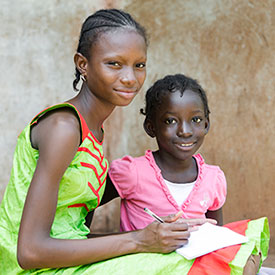Adolescent HIV Prevention and Treatment Implementation Science Alliance (AHISA)
Related News
- NIH funds study to prevent, treat HIV among adolescents in poor countries
NICHD/NIH news, Sep 19, 2018 - Making implementation science work for children and adolescents living with HIV co-authored by Fogarty staff
JAIDS Supplement, Jul 17, 2018 (online) - About the July 2018 related satellite session at the International AIDS Conference, including slides: Adolescent HIV prevention and treatment implementation science alliance
Co-chairs: Linda-Gail Bekker and Rachel Sturke
The Adolescent HIV Prevention and Treatment Implementation Science Alliance (AHISA)aims to enhance the effective use of evidence and help overcome implementation challenges related to prevention, screening and treatment of HIV among adolescents (ages 15 to 24) in sub-Saharan Africa by catalyzing collaboration and communication among implementation scientists, program implementers and policymakers. The Center for Global Health Studies at Fogarty launched the initiative in collaboration with the Office of the Global AIDS Coordinator and other NIH Institutes and Centers.
The goals of the Alliance are to:
- provide a platform for cross-fertilization and exchange of ideas and information among implementation scientists and other stakeholders focusing on different aspects of HIV in adolescents;
- enable the research to be better informed by programmatic challenges and questions;
- inform policymakers of promising evidence and encourage use of the data in decision making; and
- extend the reach and impact of implementation science related to adolescent HIV prevention and treatment.

borgogniels/istock/Thinkstock
The Alliance convenes a forum that enables the exchange of ideas, insights and experiences in understanding factors that drive uptake and adherence to adolescent HIV prevention and treatment strategies to bridge the gap between research, programs and policy. Forum participants will include NIH-funded scientists conducting relevant implementation research; and in-country partners including PEPFAR in-country staff, key in-country government representatives, in-country research collaborators, and other stakeholders. The forum expects to meet twice per year over two years, with meeting locations that rotate between the U.S. and sub-Saharan Africa.





















.png)









No hay comentarios:
Publicar un comentario